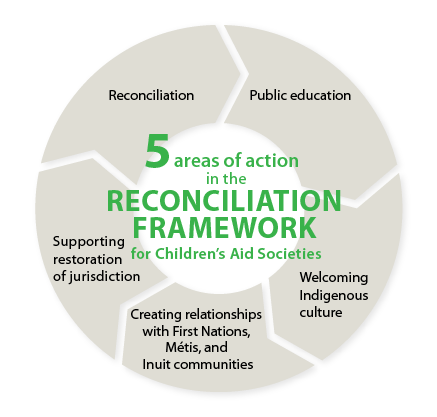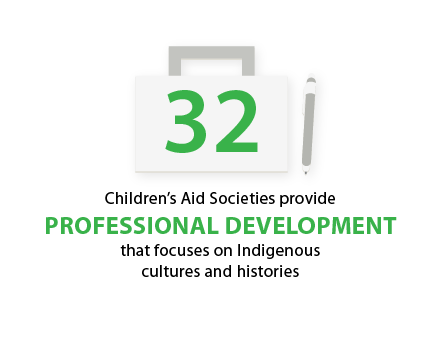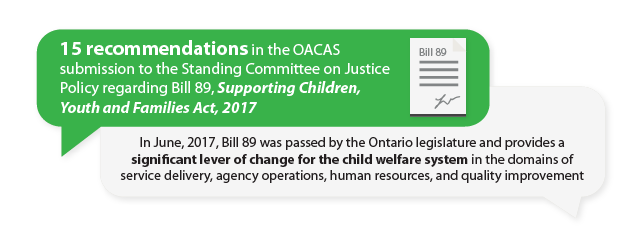Children’s Aid Societies are changing Ontario’s child welfare system for the better through seven change levers
For over two years OACAS and its 48 member Children’s Aid Societies (CASs) have been working to bring about substantial changes needed to build a better child welfare system in Ontario. The voices calling for change have been loud and critical. The Auditor-General, the media, and most importantly our clients – children, youth, and families – have deep concerns that child welfare services are not equitably offered across Ontario, and that the most disenfranchised children and families in our province are especially losing out.
Our answer to the challenge of how to improve the outcomes for children, youth, and families who received child welfare services is laid out in this annual report. Read below to learn about the levers of change that OACAS and member Children’s Aid Societies have identified and developed to significantly improve the child welfare system in Ontario.
In 2016-17 OACAS and member agencies made significant progress in developing seven change levers to improve the experience and outcomes for children and families receiving child welfare services across Ontario.
Read below to learn about how an Education and Training Strategy, a Call to Action for transparency and mutual accountability, a Reconciliation Framework, the One Vision One Voice Practice Framework, a Shared Services Program, Data Collection and Reporting, and Advocacy for Legislative and Policy Change are lifting child welfare into a new and better place.
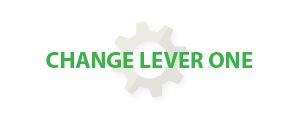
Education and training to support service delivery excellence across the province
Education and training for staff offers a key change lever to ensure that children and families receive the same high standard of child welfare service no matter where they live in Ontario. In 2016-17 OACAS reached a significant milestone with the launch of a new education system and provincial authorization process for child welfare professionals. This new training and authorization process will ensure that compassionate and skilled professionals provide children, youth, and families with culturally sensitive services and an equitable chance at successful outcomes.
OACAS also continues to focus on developing tools and training for volunteer board members to ensure effective oversight at Children’s Aid Societies across the province. This will help to develop a system composed of Children’s Aid Societies that place the child at the centre of their work, are accountable for public resources, transparent about performance, and willing to make changes to ensure successful outcomes.
The educational redesign follows two years of instructional design and development and uses an anti-oppressive framework to reflect the realities of child welfare in Ontario. The new curriculum is composed of eight new courses that offer a blend of on-line and instructor-led classroom learning and includes an expanded focus on Indigenous issues as well as equity, human rights, and anti racism. The new education system will support child protection workers to offer services that are culturally appropriate and tailored to a child and family’s needs.
The new authorization process requires all new child welfare professionals to follow the same training pathway based on the new curriculum during a four-month training period and pass a final authorization exam. Authorization will help to ensure that children, youth, and families receive consistent, equitable, and excellent services that meet provincial standards across Ontario.
OACAS continued to strengthen child welfare governance by providing board members with ongoing learning opportunities and tools to support effective oversight and stewardship. This year training for board governors has focused on how to make the right decisions for their community while also considering the broader needs of the provincial child welfare system.
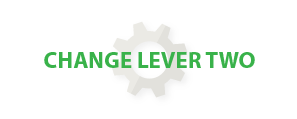
Call to Action for system transparency and mutual accountability
In 2016-17 OACAS and Children’s Aid Societies made significant progress on a joint Call to Action to more transparently share interagency data and information on progress in five areas of improvement. This data sharing and tracking will ensure that improvements that are identified as needed are consistently implemented across the province for the benefit of all children, youth, and families and provides a critical lever to move independent Children’s Aid Societies towards working more cohesively as a system.

Reconciliation Framework
In 2016-17 OACAS and member agencies continued to implement the OACAS Reconciliation Framework, Sharing a Good Heart, to support the path to reconciliation between child welfare and Indigenous communities in Ontario. The Reconciliation Framework offers a continuum of strategies and tools so Children’s Aid Societies can shift the culture within agencies to a more collaborative relationship with Indigenous children, families, and communities. A recent survey of the child welfare sector shows significant growth over the past five years in emerging practices to support Indigenous communities. During the past year OACAS continued to partner and support the Association of Native Child and Family Service Agencies of Ontario (ANCFSAO) as it develops its capacity as the voice for Indigenous child welfare.

Nogdawindamin Family and Community Services became the newest Indigenous-run Child Well-being Society, taking responsibility for providing services to seven First Nations communities based along the north shore of Lake Huron. The designation follows a seven-year accreditation process run by the Ministry of Children, Community and Social Servicess (MCCSS).

One Vision One Voice: Changing the Ontario Child Welfare System to Better Serve African Canadians
In 2016-17 OACAS, in collaboration with representatives from the African Canadian community, launched the One Vision One Voice Practice Framework and its companion research report. The Practice Framework lays the foundation for a service approach that will introduce reforms to the child welfare system to provide more culturally appropriate services and improve the disproportionality in outcomes.
The One Vision One Voice: Changing the Ontario Child Welfare System to Better Serve African Canadians change lever will improve outcomes for children and families by reducing the overrepresentation of African Canadians in the child welfare system, improving the experience for children and youth who come into care, decreasing the removal of children and youth from their homes, reducing their time in foster care, and increasing the likelihood of adoption or other permanent placements for African Canadian children and youth who cannot return to their homes.
250 community members , leaders , and CAS staff attended a symposium to launch the Practice Framework. Keynote speakers included Michael Coteau, Minister of Children and Youth Services and responsible for the Anti-Racism Directorate, Renu Mandhane, Chief Commissioner of the Ontario Human Rights Commission, and Irwin Elman, Provincial Advocate for Children and Youth.
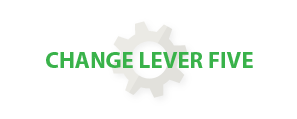
Shared Services Program
In 2016-17 OACAS finalized the governance and program design for a sector-wide Shared Services Program. The project takes a broader perspective than cost savings, recognizing the impact that shared services can have as a change lever by helping shape the optimal structure for delivery of child welfare services. A better system structure and use of resources will help to ensure equity of service across the province and reduce fragmentation, so that children, youth, and families receive better services and achieve better outcomes.

Data Collection and Reporting
In 2016-17 OACAS and member agencies continued to take a proactive and strategic approach to data collection and reporting. Collecting consistent data across the province offers a powerful lever for identifying gaps and making better decisions about how to improve services to children and families. This allows us to help create more equitable outcomes for children, youth, and families in the areas of safety, permanency, and well-being. Public reporting of our data facilitates transparency and increases public confidence in the child welfare sector.

Advocacy for Legislation and Policy Change
Child welfare in Ontario provides mandated services that are guided by provincial legislation, regulation, and policies. OACAS actively participates in reviews of these change levers and advocates for changes that will improve how the system delivers services that promote the safety and well-being of children, youth, and families in Ontario. In 2016-17 OACAS and member agencies participated in the review of the Supporting Child, Youth and Family Services Act, 2017 (Bill 89), which has now received royal assent, the Review of the Ontario Residential Services System, and the Ministry of Child and Youth Services Adoption Enhancement Review.
Corporate Update
To address the ongoing shortage of office space at the association and provide areas for members to meet, as well as, seating for staff, OACAS purchased additional space adjoining to its current office.
View the Audited Financial Statements for 2016-2017
View the Annual Report Highlights for 2016-2017-print version





